Samsung Announces the Galaxy NX, the First Interchangeable Lens Camera With LTE and WiFi
Samsung announced the Galaxy NX this morning as the world’s first interchangeable-lens camera with LTE and WiFi connectivity. Sporting a 20.3MP APS-C sensor with Android 4.2 and a 4.8-inch HD LCD display, the Galaxy NX brings both professional-level photography and a mobile operating system with apps and connectivity together as one. This is most definitely a product on its own, breaking new ground.
As a camera, the Galaxy NX offers a 20.3MP APS-C sensor along with a DRIMe IV Image Signal Processor to deliver the “speed and accuracy which today’s photographers demand.” It also has an Advanced Hybrid Auto Focus system, a 1/6000 sec shutter speed and 8.6fps shooting, and a selection of interchangeable lenses from compact pancake to ultra-wide fisheye to longer prime and zoom lenses. Full spec list for the camera gurus in the building is listed below.
As an Android device, it runs Android 4.2 on a 4.8-inch HD touchscreen LCD display and has access to the Google Play store and all of your favorite apps. The device itself sports a 1.6GHz quad-core processor, 16GB of internal storage, microSD card slot that is expandable up to 64GB, 2GB RAM, and a 4360mAh battery.
Samsung tossed in all of their special photo Smart Modes as well, including a Camera Studio, Photo Suggest, Story Album, and more. It really is like a Galaxy phone attached to the back of a legitimate camera.
On a connectivity level, we’re looking at HSPA+ and 4G LTE, so that sharing your brilliant photos from anywhere in the world can happen.Availability has not been announced for the U.S.
Introducing GALAXY NX, the First Interchangeable-Lens Camera with 3G/4G LTE & Wi-Fi Connectivity
Always connected, the Samsung GALAXY NX turns every picture into a story worth telling
LONDON, UK – June 20, 2013 – Samsung Electronics Co., Ltd. today announced the launch of the GALAXY NX, the first 3G/4G LTE Connected Compact System Camera (CSC). Versatile and easy to use, the GALAXY NX combines cutting edge optical performance with connectivity capabilities and a galaxy of applications based on the Android eco-system, all in one stylish package. The result is a new type of connected device that allows users to turn their experiences into a story that can be instantly shared with anyone they choose, from wherever they might be, in amazing color and outstanding detail.
“The GALAXY NX reflects the unique needs of a user who needs to take professional photos and share them immediately in any situation. For those who want to express themselves and the exciting moments that make up their lives quickly, easily and on the go, the GALAXY NX is an ideal choice” said Myoung Sup Han, Senior Vice President and Head of the Digital Imaging Business, Samsung Electronics.
Share everything, from anywhere
With 3G/4G LTE technology, the GALAXY NX allows photographers to stay constantly connected with their world. Promising speedy sharing whether on the move or right at home, the GALAXY NX’s seamless connectivity transcends the current offering to photographers, providing a device which puts the sharing of professional level images at its heart. The GALAXY NX embraces the era of visual communication to provide an outlet for passionate photographers to express their exciting experiences immediately in spectacular quality.
The GALAXY NX is equipped to help you capture the scene and mood of every hotspot you visit.Photo Suggest provides location based recommendations of popular photography spots, sourced from a huge library of images taken by fellow photographers across the world. Story Album lets users enjoy timeless memories by displaying special moments on one timeline, reframing and resizing them to create digital photo books that can be viewed and shared on other devices.
Stunning picture quality
Superior image quality is available whenever and wherever with the GALAXY NX and an array of interchangeable lenses. The 20.3MP APS-C Sensor produces images which are bright and detailed, even in low light conditions, while the DRIMe IV Image Signal Processer delivers the speed and accuracy which today’s photographers demand.
Life moves fast and the GALAXY NX makes sure that you don’t miss a moment. Its Advanced Hybrid Auto Focus (AF) System ensures accurate phase and contrast detection for crisp, vibrant shots, while the 1/6000 sec shutter speed and 8.6fps shooting lets you capture the action as it’s happening.
The flexibility offered by the GALAXY NX’s selection of Interchangeable Lenses places creative control firmly in the hands of the photographer, opening up a world of imaging possibilities, whatever the scenario. From compact pancake lenses and an ultra-wide fisheye, to exquisite longer prime and zoom lenses, the extensive range of lenses help change users perspective on their world to create images which are truly special and help them to tell their story in a new way. True 3D Creator also brings an added element of realism to the GALAXY NX results, allowing users to shoot images and movies in 3D with Samsung’s 45mm 2D/3D lens.
Simple and easy to use
With Android 4.2 Jelly Bean, the functionality of a smartphone is utilized to improve the photographic experience. Users can choose from an entire universe of Android apps to help personalize their GALAXY NX and do more than just shoot amazing photographs and video, from editing images to adding special effects to staying in touch with friends and family.
The GALAXY NX is packed with features which help photographers to take images that embody their passions and express their unique outlook on the scenes they are shooting. More than 30Smart Modes lets users choose the optimum settings for the environment they are capturing, as well as create fresh, artistic images. ‘Multi Exposure’ merges two different shots together to produce one distinctive image, while ‘Animated Photo’ connects continuous shots of up to five seconds, creating a moving GIF file. For added realism, ‘Sound & Shot’ stores sound and voice together as the picture is taken, so moments are captured exactly as they happened.
For added personalization, Camera Studio allows users to easily customize settings with their most frequently used applications or camera modes, making sure their photos are captured exactly as desired every time.
For multimedia content and more detailed information, please visit www.samsungmobilepress.com or www.samsung.com/galaxycamera.
* All functionality, features, specifications and other product information provided in this document including, but not limited to, the benefits, design, pricing, components, performance, availability, and capabilities of the product are subject to change without notice or obligation.
* Android, Google, Android Beam, Google Search, Google Maps, Gmail, Google Latitude, Google Play, Google Plus. YouTube, Google Talk, Google Places, Google Navigation, Google Downloads are trademarks of Google Inc.
* Blurb, the global creative publishing platform, partners with Samsung to power worldwide book and magazine print production and fulfillment within the GALAXY NX’s new Story Album application. Users of Story Album will now be able to automatically create professional quality print photo books and magazines quickly and seamlessly from their camera phone images.
About Samsung Electronics Co., Ltd.
Samsung Electronics Co., Ltd. is a global leader in technology, opening new possibilities for people everywhere. Through relentless innovation and discovery, we are transforming the worlds of televisions, smartphones, personal computers, printers, cameras, home appliances, LTE systems, medical devices, semiconductors and LED solutions. We employ 236,000 people across 79 countries with annual sales of US$187.8 billion. To discover more, please visit www.samsung.com.
Samsung announced the Galaxy NX this morning as the world’s first interchangeable-lens camera with LTE and WiFi connectivity. Sporting a 20.3MP APS-C sensor with Android 4.2 and a 4.8-inch HD LCD display, the Galaxy NX brings both professional-level photography and a mobile operating system with apps and connectivity together as one. This is most definitely a product on its own, breaking new ground.
As a camera, the Galaxy NX offers a 20.3MP APS-C sensor along with a DRIMe IV Image Signal Processor to deliver the “speed and accuracy which today’s photographers demand.” It also has an Advanced Hybrid Auto Focus system, a 1/6000 sec shutter speed and 8.6fps shooting, and a selection of interchangeable lenses from compact pancake to ultra-wide fisheye to longer prime and zoom lenses. Full spec list for the camera gurus in the building is listed below.
As an Android device, it runs Android 4.2 on a 4.8-inch HD touchscreen LCD display and has access to the Google Play store and all of your favorite apps. The device itself sports a 1.6GHz quad-core processor, 16GB of internal storage, microSD card slot that is expandable up to 64GB, 2GB RAM, and a 4360mAh battery.
Samsung tossed in all of their special photo Smart Modes as well, including a Camera Studio, Photo Suggest, Story Album, and more. It really is like a Galaxy phone attached to the back of a legitimate camera.
On a connectivity level, we’re looking at HSPA+ and 4G LTE, so that sharing your brilliant photos from anywhere in the world can happen.Availability has not been announced for the U.S.
As a camera, the Galaxy NX offers a 20.3MP APS-C sensor along with a DRIMe IV Image Signal Processor to deliver the “speed and accuracy which today’s photographers demand.” It also has an Advanced Hybrid Auto Focus system, a 1/6000 sec shutter speed and 8.6fps shooting, and a selection of interchangeable lenses from compact pancake to ultra-wide fisheye to longer prime and zoom lenses. Full spec list for the camera gurus in the building is listed below.
As an Android device, it runs Android 4.2 on a 4.8-inch HD touchscreen LCD display and has access to the Google Play store and all of your favorite apps. The device itself sports a 1.6GHz quad-core processor, 16GB of internal storage, microSD card slot that is expandable up to 64GB, 2GB RAM, and a 4360mAh battery.
Samsung tossed in all of their special photo Smart Modes as well, including a Camera Studio, Photo Suggest, Story Album, and more. It really is like a Galaxy phone attached to the back of a legitimate camera.
On a connectivity level, we’re looking at HSPA+ and 4G LTE, so that sharing your brilliant photos from anywhere in the world can happen.Availability has not been announced for the U.S.
Introducing GALAXY NX, the First Interchangeable-Lens Camera with 3G/4G LTE & Wi-Fi Connectivity
Always connected, the Samsung GALAXY NX turns every picture into a story worth telling
LONDON, UK – June 20, 2013 – Samsung Electronics Co., Ltd. today announced the launch of the GALAXY NX, the first 3G/4G LTE Connected Compact System Camera (CSC). Versatile and easy to use, the GALAXY NX combines cutting edge optical performance with connectivity capabilities and a galaxy of applications based on the Android eco-system, all in one stylish package. The result is a new type of connected device that allows users to turn their experiences into a story that can be instantly shared with anyone they choose, from wherever they might be, in amazing color and outstanding detail.
“The GALAXY NX reflects the unique needs of a user who needs to take professional photos and share them immediately in any situation. For those who want to express themselves and the exciting moments that make up their lives quickly, easily and on the go, the GALAXY NX is an ideal choice” said Myoung Sup Han, Senior Vice President and Head of the Digital Imaging Business, Samsung Electronics.
Share everything, from anywhere
With 3G/4G LTE technology, the GALAXY NX allows photographers to stay constantly connected with their world. Promising speedy sharing whether on the move or right at home, the GALAXY NX’s seamless connectivity transcends the current offering to photographers, providing a device which puts the sharing of professional level images at its heart. The GALAXY NX embraces the era of visual communication to provide an outlet for passionate photographers to express their exciting experiences immediately in spectacular quality.
The GALAXY NX is equipped to help you capture the scene and mood of every hotspot you visit.Photo Suggest provides location based recommendations of popular photography spots, sourced from a huge library of images taken by fellow photographers across the world. Story Album lets users enjoy timeless memories by displaying special moments on one timeline, reframing and resizing them to create digital photo books that can be viewed and shared on other devices.
Stunning picture quality
Superior image quality is available whenever and wherever with the GALAXY NX and an array of interchangeable lenses. The 20.3MP APS-C Sensor produces images which are bright and detailed, even in low light conditions, while the DRIMe IV Image Signal Processer delivers the speed and accuracy which today’s photographers demand.
Life moves fast and the GALAXY NX makes sure that you don’t miss a moment. Its Advanced Hybrid Auto Focus (AF) System ensures accurate phase and contrast detection for crisp, vibrant shots, while the 1/6000 sec shutter speed and 8.6fps shooting lets you capture the action as it’s happening.
The flexibility offered by the GALAXY NX’s selection of Interchangeable Lenses places creative control firmly in the hands of the photographer, opening up a world of imaging possibilities, whatever the scenario. From compact pancake lenses and an ultra-wide fisheye, to exquisite longer prime and zoom lenses, the extensive range of lenses help change users perspective on their world to create images which are truly special and help them to tell their story in a new way. True 3D Creator also brings an added element of realism to the GALAXY NX results, allowing users to shoot images and movies in 3D with Samsung’s 45mm 2D/3D lens.
Simple and easy to use
With Android 4.2 Jelly Bean, the functionality of a smartphone is utilized to improve the photographic experience. Users can choose from an entire universe of Android apps to help personalize their GALAXY NX and do more than just shoot amazing photographs and video, from editing images to adding special effects to staying in touch with friends and family.
The GALAXY NX is packed with features which help photographers to take images that embody their passions and express their unique outlook on the scenes they are shooting. More than 30Smart Modes lets users choose the optimum settings for the environment they are capturing, as well as create fresh, artistic images. ‘Multi Exposure’ merges two different shots together to produce one distinctive image, while ‘Animated Photo’ connects continuous shots of up to five seconds, creating a moving GIF file. For added realism, ‘Sound & Shot’ stores sound and voice together as the picture is taken, so moments are captured exactly as they happened.
For added personalization, Camera Studio allows users to easily customize settings with their most frequently used applications or camera modes, making sure their photos are captured exactly as desired every time.
For multimedia content and more detailed information, please visit www.samsungmobilepress.com or www.samsung.com/galaxycamera.
Always connected, the Samsung GALAXY NX turns every picture into a story worth telling
LONDON, UK – June 20, 2013 – Samsung Electronics Co., Ltd. today announced the launch of the GALAXY NX, the first 3G/4G LTE Connected Compact System Camera (CSC). Versatile and easy to use, the GALAXY NX combines cutting edge optical performance with connectivity capabilities and a galaxy of applications based on the Android eco-system, all in one stylish package. The result is a new type of connected device that allows users to turn their experiences into a story that can be instantly shared with anyone they choose, from wherever they might be, in amazing color and outstanding detail.
“The GALAXY NX reflects the unique needs of a user who needs to take professional photos and share them immediately in any situation. For those who want to express themselves and the exciting moments that make up their lives quickly, easily and on the go, the GALAXY NX is an ideal choice” said Myoung Sup Han, Senior Vice President and Head of the Digital Imaging Business, Samsung Electronics.
Share everything, from anywhere
With 3G/4G LTE technology, the GALAXY NX allows photographers to stay constantly connected with their world. Promising speedy sharing whether on the move or right at home, the GALAXY NX’s seamless connectivity transcends the current offering to photographers, providing a device which puts the sharing of professional level images at its heart. The GALAXY NX embraces the era of visual communication to provide an outlet for passionate photographers to express their exciting experiences immediately in spectacular quality.
The GALAXY NX is equipped to help you capture the scene and mood of every hotspot you visit.Photo Suggest provides location based recommendations of popular photography spots, sourced from a huge library of images taken by fellow photographers across the world. Story Album lets users enjoy timeless memories by displaying special moments on one timeline, reframing and resizing them to create digital photo books that can be viewed and shared on other devices.
Stunning picture quality
Superior image quality is available whenever and wherever with the GALAXY NX and an array of interchangeable lenses. The 20.3MP APS-C Sensor produces images which are bright and detailed, even in low light conditions, while the DRIMe IV Image Signal Processer delivers the speed and accuracy which today’s photographers demand.
Life moves fast and the GALAXY NX makes sure that you don’t miss a moment. Its Advanced Hybrid Auto Focus (AF) System ensures accurate phase and contrast detection for crisp, vibrant shots, while the 1/6000 sec shutter speed and 8.6fps shooting lets you capture the action as it’s happening.
The flexibility offered by the GALAXY NX’s selection of Interchangeable Lenses places creative control firmly in the hands of the photographer, opening up a world of imaging possibilities, whatever the scenario. From compact pancake lenses and an ultra-wide fisheye, to exquisite longer prime and zoom lenses, the extensive range of lenses help change users perspective on their world to create images which are truly special and help them to tell their story in a new way. True 3D Creator also brings an added element of realism to the GALAXY NX results, allowing users to shoot images and movies in 3D with Samsung’s 45mm 2D/3D lens.
Simple and easy to use
With Android 4.2 Jelly Bean, the functionality of a smartphone is utilized to improve the photographic experience. Users can choose from an entire universe of Android apps to help personalize their GALAXY NX and do more than just shoot amazing photographs and video, from editing images to adding special effects to staying in touch with friends and family.
The GALAXY NX is packed with features which help photographers to take images that embody their passions and express their unique outlook on the scenes they are shooting. More than 30Smart Modes lets users choose the optimum settings for the environment they are capturing, as well as create fresh, artistic images. ‘Multi Exposure’ merges two different shots together to produce one distinctive image, while ‘Animated Photo’ connects continuous shots of up to five seconds, creating a moving GIF file. For added realism, ‘Sound & Shot’ stores sound and voice together as the picture is taken, so moments are captured exactly as they happened.
For added personalization, Camera Studio allows users to easily customize settings with their most frequently used applications or camera modes, making sure their photos are captured exactly as desired every time.
For multimedia content and more detailed information, please visit www.samsungmobilepress.com or www.samsung.com/galaxycamera.
* All functionality, features, specifications and other product information provided in this document including, but not limited to, the benefits, design, pricing, components, performance, availability, and capabilities of the product are subject to change without notice or obligation.* Android, Google, Android Beam, Google Search, Google Maps, Gmail, Google Latitude, Google Play, Google Plus. YouTube, Google Talk, Google Places, Google Navigation, Google Downloads are trademarks of Google Inc.* Blurb, the global creative publishing platform, partners with Samsung to power worldwide book and magazine print production and fulfillment within the GALAXY NX’s new Story Album application. Users of Story Album will now be able to automatically create professional quality print photo books and magazines quickly and seamlessly from their camera phone images.About Samsung Electronics Co., Ltd.Samsung Electronics Co., Ltd. is a global leader in technology, opening new possibilities for people everywhere. Through relentless innovation and discovery, we are transforming the worlds of televisions, smartphones, personal computers, printers, cameras, home appliances, LTE systems, medical devices, semiconductors and LED solutions. We employ 236,000 people across 79 countries with annual sales of US$187.8 billion. To discover more, please visit www.samsung.com.
Samsung Galaxy NX mirrorless camera: hands-on with an Android ILC (video)
After last year's Galaxy Camera, Samsung split in two directions. It went closer to the phone with the Galaxy S 4 Zoom, shrinking the form factor (and some of the specs) for something that closer approximates a pocket-friendly device, and it got serious about interchangeable-lens cameras. This is the Galaxy NX, an ILC with LTE connectivity that's capable of capturing at 8.6 fps and contains a hybrid autofocus system made by Samsung. In fact, the company says it's behind every part of this new device, from the quad-core 1.6GHz Pega-Q processor, to the 4.8-inch LCD screen, to even the shutter mechanism. With a "DSLR-class" 20.3-megapixel APS-C CMOS image sensor we've seen on other NX cameras, new DRIMe IV image processor and ISO settings from 100 to 25,600, Samsung appears to be making a serious pitch for photographers interested in more than just an Instagram hook-up. This mirrorless shooter will be compatible with the full gamut of NX lenses, currently totaling 13. We paired the Galaxy NX with its 18-55mm OIS kit lens and tested it out for a bit. Read up on our impressions after the break.
Update: Now with a dollop of video from the Premiere event in London.
Gallery: Samsung Galaxy NX camera hands-on
After last year's Galaxy Camera, Samsung split in two directions. It went closer to the phone with the Galaxy S 4 Zoom, shrinking the form factor (and some of the specs) for something that closer approximates a pocket-friendly device, and it got serious about interchangeable-lens cameras. This is the Galaxy NX, an ILC with LTE connectivity that's capable of capturing at 8.6 fps and contains a hybrid autofocus system made by Samsung. In fact, the company says it's behind every part of this new device, from the quad-core 1.6GHz Pega-Q processor, to the 4.8-inch LCD screen, to even the shutter mechanism. With a "DSLR-class" 20.3-megapixel APS-C CMOS image sensor we've seen on other NX cameras, new DRIMe IV image processor and ISO settings from 100 to 25,600, Samsung appears to be making a serious pitch for photographers interested in more than just an Instagram hook-up. This mirrorless shooter will be compatible with the full gamut of NX lenses, currently totaling 13. We paired the Galaxy NX with its 18-55mm OIS kit lens and tested it out for a bit. Read up on our impressions after the break.
Update: Now with a dollop of video from the Premiere event in London.
Update: Now with a dollop of video from the Premiere event in London.
Gallery: Samsung Galaxy NX camera hands-on
Samsung’s Galaxy NX Is A 4G Android Interchangeable Lens Camera That Lets You Post To Instagram
Now that video on Instagram just got real, a connected pro camera with direct access to Android apps makes a fair bit of sense. Enter the Android-powered Samsung Galaxy NX.
Samsung continues to push its Galaxy brand into new devices’ types and categories, a strategy aimed at extending the success it’s had with the brand in smartphones. Today the Korean giant has added the Galaxy badge to its high end camera range, with the launch of this digital mirrorless interchangeable lens camera (MILC): its first interchangeable lens camera to run Android.
Samsung’s other high end cameras have been badged NX but this is the first time it’s used the Galaxy brand on its pro range. It’s not, however, the first time it’s pushed the Galaxy brand into camera tech territory — having recently extended the Galaxy S4 range with a hybrid smartphone point-and-shoot camera with a 10x optical zoom on the back. That device, the Galaxy S4 Zoom, remains a mid-range affair. It’s certainly not targeting the professional photographer market, as the Galaxy NX presumably is. Samsung also previously launched another mid-range camera running Android, called the Galaxy Camera — making extending the brand to its pro MILC range a natural next step.
The Galaxy NX runs Android 4.2.2 skinned with a version of Samsung’s TouchWiz UI tweaked to make sense for the camera format. This means the UI defaults to the camera app view. Swiping left from there brings up a familiar Samsung Android home screen where users can get at all the usual Android stuff including Google Play, the web browser, plus apps — like Instagram, say. And that’s the obvious use-case for a bit of kit like this: being able to post near-SLR quality photos direct to apps like Instagram or share on social media, without even having to pull the photos off the camera first. The Galaxy NX has both 4G/LTE and Wi-Fi built in. It is Samsung’s first interchangeable lens camera to include LTE, in fact.
The version of Android on the Galaxy NX does not include a phone dialer but that’s the only other major software difference when compared to a typical Samsung smartphone. The point here is clearly for Samsung to leverage the familiarity of its TouchWiz environment to try to bolster the appeal of its high end camera kit.
Who might the Galaxy NX appeal to? Perhaps someone hankering for a better camera but not necessarily yet especially well versed in how to use more pro photography equipment. The external look and feel of the Galaxy NX bears that theory out, being especially plain looking — almost devoid of markings. It’s also terribly lightweight for such a large bit of kit, adding another convenience string to its bow.
The Galaxy NX has a 20.3MP APS-C CMOS Image sensor that’s 24mm in size. It’s powered by Samsung’s DRIMe IV processor, which it says is 4x faster than its previous processor. The device supports up to 25,600 ISO, and it’s the same family of interchangeable lens as Samsung’s prior MILCs.
This slideshow requires JavaScript.
Samsung Targets Photo-Thusiasts With Android-Based Galaxy NX Camera
Samsung continues to push its Galaxy brand into new devices’ types and categories, a strategy aimed at extending the success it’s had with the brand in smartphones. Today the Korean giant has added the Galaxy badge to its high end camera range, with the launch of this digital mirrorless interchangeable lens camera (MILC): its first interchangeable lens camera to run Android.
Samsung’s other high end cameras have been badged NX but this is the first time it’s used the Galaxy brand on its pro range. It’s not, however, the first time it’s pushed the Galaxy brand into camera tech territory — having recently extended the Galaxy S4 range with a hybrid smartphone point-and-shoot camera with a 10x optical zoom on the back. That device, the Galaxy S4 Zoom, remains a mid-range affair. It’s certainly not targeting the professional photographer market, as the Galaxy NX presumably is. Samsung also previously launched another mid-range camera running Android, called the Galaxy Camera — making extending the brand to its pro MILC range a natural next step.
The Galaxy NX runs Android 4.2.2 skinned with a version of Samsung’s TouchWiz UI tweaked to make sense for the camera format. This means the UI defaults to the camera app view. Swiping left from there brings up a familiar Samsung Android home screen where users can get at all the usual Android stuff including Google Play, the web browser, plus apps — like Instagram, say. And that’s the obvious use-case for a bit of kit like this: being able to post near-SLR quality photos direct to apps like Instagram or share on social media, without even having to pull the photos off the camera first. The Galaxy NX has both 4G/LTE and Wi-Fi built in. It is Samsung’s first interchangeable lens camera to include LTE, in fact.
The version of Android on the Galaxy NX does not include a phone dialer but that’s the only other major software difference when compared to a typical Samsung smartphone. The point here is clearly for Samsung to leverage the familiarity of its TouchWiz environment to try to bolster the appeal of its high end camera kit.
Who might the Galaxy NX appeal to? Perhaps someone hankering for a better camera but not necessarily yet especially well versed in how to use more pro photography equipment. The external look and feel of the Galaxy NX bears that theory out, being especially plain looking — almost devoid of markings. It’s also terribly lightweight for such a large bit of kit, adding another convenience string to its bow.
The Galaxy NX has a 20.3MP APS-C CMOS Image sensor that’s 24mm in size. It’s powered by Samsung’s DRIMe IV processor, which it says is 4x faster than its previous processor. The device supports up to 25,600 ISO, and it’s the same family of interchangeable lens as Samsung’s prior MILCs.
This slideshow requires JavaScript.
Samsung Targets Photo-Thusiasts With Android-Based Galaxy NX Camera
Last year, Samsung introduced its $500 Wi-Fi-connected Galaxy Camera and, more recently, a Galaxy smartphone with an optical zoom lens. Now get ready for the Korean electronics maker’s next step in the digital camera market.

As was rumored, Samsung today officially announced plans for a new, mirrorless, Android-based camera in its NX line — marrying Wi-Fi and high-speed data connectivity with interchangeable lens options.
Still not sure what that all means? Here’s a basic explainer: Simple point-and-shoots have built-in optical zoom lenses. More advanced cameras have detachable lenses that can be swapped out, depending on a photog’s needs. This camera falls into the latter camp.
And Samsung is wagering that, in addition to shelling out for lens kits, customers will want to pay for a monthly data plan to immediately share the pro-level photos they’re snapping.
Not only does the Galaxy NX work with the 13 interchangeable lenses in Samsung’s high-performance, compact NX line — including a 2-D/3-D lens option — it has a large, 20.3-megapixel APS-C sensor for improved image quality, 31 “smart” modes and a 1.6 GHz quad-core processor. It also has a giant 4,300-milliamp battery.
Unlike Samsung’s original smart camera, which was running on Google Android 4.1 Jelly Bean, the connected NX is running on the latest operating system, 4.2 Jelly Bean, and can utilize specialized photography apps. This includes one that automatically creates story albums that can be purchased and shipped, and the same “eraser” feature that the S4 smartphone has.
The back of the NX camera, like the Galaxy Camera, is buttonless, using instead a 4.8-inch capacitive LCD touchscreen that looks, well, a lot like a smartphone.
If this camera has got you all hot and bothered, time for the cold shower: Samsung, which held an event in London to show off upcoming products, didn’t reveal a U.S. release date or price point — although, it’s likely this device will cost more than the first Samsung Galaxy camera.
The company also hasn’t said which wireless carriers it’s in talks with for the product. At a product pre-briefing, Samsung said it would be eyeing photo-specialty and consumer-electronics stores as retail partners, not necessarily carrier stores. (The Galaxy camera is currently available through AT&T and Verizon Wireless.)

The fact that Samsung is targeting photo-specialty stores underscores the NX’s place in the market: It isn’t really meant for average point-and-shoot consumers, nor would it really replace the smartphone. (That’s where the Galaxy S4 Zoom might come in, which AllThingD’s Bonnie Cha wrote about last week.)
Would Samsung like to see your average consumer — perhaps your mother-in-law comes to mind, or a selfie-snapping twenty-something — purchase a camera like this for regular use? Sure. But I’m betting this will appeal more to enthusiasts and event photographers who are used to spending on lenses, and want to immediately share batches of photos to the cloud.
It’s been a rough ride for camera makers, and they’re packing all kinds of features into compacts to make them more appealing — even the smartphone operating systems they’re competing with. Still, Samsung gets some props for diving in where others, namely Nikon and Polaroid, have only dipped their toes.
Hands-On With Samsung's Galaxy S4 Zoom, The Smartphone With A 10x Optical Zoom Lens
 Samsung’s Galaxy S4 Zoom steers its Galaxy brand into slightly new territory, by creating a hybrid smartphone-cum-pocket-camera. Unlike pretty much every other cameraphone around, the Zoom has a 10x optical zoom lens protruding from its rear.
Samsung’s Galaxy S4 Zoom steers its Galaxy brand into slightly new territory, by creating a hybrid smartphone-cum-pocket-camera. Unlike pretty much every other cameraphone around, the Zoom has a 10x optical zoom lens protruding from its rear.
In short, it’s a phone with two faces: one pure Galaxy smartphone, the second resembling a classic point-and-shoot camera. It’s a curious move that’s likely to grab consumers’ attention, but there’s a bigger question here — what’s it like using it?
If you only look at the Zoom’s phone half, you’d quickly discover it’s largely standard mid-range Galaxy fare — the usual TouchWiz interface runs atop Android 4.2.2 Jelly Bean, and there’s a dual-core 1.5GHz chipset powering the show. It felt fast and responsive during my brief hands on, and the 4.3-inch qHD AMOLED screen was bright and plenty big enough for all the typical smartphone uses, without being as huge a pane as Samsung’s flagship high-end smartphones.
The Zoom has a removable battery, accessible via a side door near the camera grip that also covers the SIM slot. Your usual selection of ports is accounted for too, though the microSD card slot, headphone jack, and micro-USB charger port are joined by a tripod mount on the base.
Samsung’s camera-centric chimera has a surprisingly pleasing feel, considering it’s considerably heavier than the company’s usual, plasticy smartphones. Despite the extra heft the overall feel is balanced. You won’t be putting it into the pocket of your skinny jeans as it would certainly drag you down, but the extra weight doesn’t feel too unwieldy. Perhaps because it looks so camera-like that the expectation is of more weight from the get-go.
The look of the device is exactly that of a hybrid. Holding it from the phone side it looks exactly like the Galaxy S4 Mini. Indeed, ignore the camera half and it is basically that phone, says Samsung. Turn it around and it’s a point and shoot digital camera. The only odd moments come when you’re holding it like a camera, so it’s in landscape orientation, but using the phone’s Android homescreen or menus. These stay in portrait orientation. Of course the camera app interface supports both landscape and portrait orientations, as do other apps – such as the web browser – but homescreens remain portrait-only.
Construction feels solid. There’s plenty of plastic on the device but the lens enclosure is metal. The edges of the phone also have the same brushed silver bands as the rest of the S4 range – albeit that appears to be plastic, rather than metal. The camera ergonomics work reasonably well, with a nicely shaped front ridge for gripping with your right hand. This is the same shiny plastic as the rest of the casing, so there’s no rubberised covering to aid grip.
The positioning of the phone power key (on the left of the top edge, when holding the phone in the camera stance) is potentially slightly awkward as it is close to where your left hand rests when you’re using the camera in landscape mode. There’s just about enough room to avoid it but a few accidental strikes are probably inevitable.
Now we’re getting to the fun part. The Galaxy Zoom has a 16MP sensor with optical image stabilisation, 10x optical zoom and a 24mm lens. Photo quality was difficult to assess in the relatively dingy conditions of the press room where the device was being demoed, and with limited hands-on time, but test shots did display a fair amount of noise. Exposure could also be uneven, and lower light shots came off with some noticeable blur, despite the image stabilisation tech inside the device.
Overall photo quality looked fair, but left plenty to be desired. Shooting in brighter outdoor conditions would undoubtedly result in crisper detail but as with many cameraphones the Galaxy Zoom appears to be a middling performer in less ideal lighting conditions (not that the average consumer will immediately realise that). The Zoom’s tactile optical zoom lens and physical camera looks are likely to win over a portion of Samsung’s target user based on their familiarity with the traditional camera form factor. Samsung cited “busy mums” as one target – i.e. people who take a lot of shots, and care about the results, but aren’t as discerning about image quality as camera pros.
Samsung has added an ‘expert’ mode to the Zoom’s camera interface for users who want to play around with a few more controls. This mode allows manual tweaking of setting like EV brightness, colour tone, saturation, sharpness, contrast, shutter speed, aperture, ISO, white balance and metering. However the typical Galaxy Zoom user is likely going to be sticking with its auto mode or consumer friendly ‘smart mode’ which offers a carousel of pre-sets to pick from, such as landscape, dawn, best face (which takes a series of shots and lets you pick the best one) and kids shot. The latter plays a baby-friendly noise to attract the subject’s attention so they’re looking at the camera before it snaps the shot. File that under ‘parent friendly’.
Likewise, the mechanical operation of the zoom lens is likely to take a little getting used to as it’s sited close to the edge of the device which means the lens can push against your fingers if you’re wrapping your hand around the back of the device, causing your grip to slip. It won’t take a user long to get accustomed to the moving protrusion, however. When you’re using the device as a phone, so when the lens is at its most retracted, it does stick out into your palm, feeling a bit lumpy. It’s not actually too bad though — and gives something grippy to tighten your palm around.
On the top right of the device, when holding the phone in the classic camera stance, is its round physical shutter key. This looks like a traditional camera shutter button. It requires a very light touch for the initial focus depression, and more of a squeeze to take the photo as you’d expect. The button felt nice and responsive during my hands on. It can also be used to jump right into camera mode from elsewhere in the OS by holding the button down.
When not in the camera application, turning the lens ring activates a camera shortcut menu where you can choose from a range of camera mode options – either by tapping the touchscreen or turning the dial to move the selection then hitting the shutter to select the mode you want. Modes are also accessible from within the camera app via a touch key at the right hand side of the interface.
When using the lens ring shortcut, modes on offer are night, animated photo, macro, landscape, beauty face (a mode that automatically ‘airbrushes’ portraits), the gallery and an auto mode that pre-selects the mode to take the shot in, based on what the camera calculates is the most appropriate mode for the conditions you’re shooting in.
The zoom ring can also be used to navigate inside the gallery, including to zoom into shots to look at details. The navigation doesn’t seem especially well thought through, however, as you can’t apparently move through photos in sequence. To browse shots you have to resort to using your finger on the screen. The fly-by-wire feel of the lens ring is also slightly too loose to be entirely pleasing. Plus there’s a slight lag between you turning and the camera interface responding by zooming in/out. It’s not a huge lag, but does make it feel slightly unresponsive.
Overall, the Galaxy S4 Zoom feels like a well thought through concept — the combining of the traditional camera form with a smartphone works surprisingly well and doesn’t feel unbalanced. But the let down is not that it looks too ugly or feels too heavy or is just weird to operate. Rather what’s a bit disappointing is that the picture quality isn’t better. For a mid range cameraphone the Galaxy S4 Zoom’s photos are probably about as good as you’d expect. But with such a whopping zoom lens on the back it’s hard not to hope for a little more photographic oomph. Still, this device’s mainstream consumer target may well be perfectly happy with what its lens can turn out — and zoom in on.

As was rumored, Samsung today officially announced plans for a new, mirrorless, Android-based camera in its NX line — marrying Wi-Fi and high-speed data connectivity with interchangeable lens options.
Still not sure what that all means? Here’s a basic explainer: Simple point-and-shoots have built-in optical zoom lenses. More advanced cameras have detachable lenses that can be swapped out, depending on a photog’s needs. This camera falls into the latter camp.
And Samsung is wagering that, in addition to shelling out for lens kits, customers will want to pay for a monthly data plan to immediately share the pro-level photos they’re snapping.
Not only does the Galaxy NX work with the 13 interchangeable lenses in Samsung’s high-performance, compact NX line — including a 2-D/3-D lens option — it has a large, 20.3-megapixel APS-C sensor for improved image quality, 31 “smart” modes and a 1.6 GHz quad-core processor. It also has a giant 4,300-milliamp battery.
Unlike Samsung’s original smart camera, which was running on Google Android 4.1 Jelly Bean, the connected NX is running on the latest operating system, 4.2 Jelly Bean, and can utilize specialized photography apps. This includes one that automatically creates story albums that can be purchased and shipped, and the same “eraser” feature that the S4 smartphone has.
The back of the NX camera, like the Galaxy Camera, is buttonless, using instead a 4.8-inch capacitive LCD touchscreen that looks, well, a lot like a smartphone.
If this camera has got you all hot and bothered, time for the cold shower: Samsung, which held an event in London to show off upcoming products, didn’t reveal a U.S. release date or price point — although, it’s likely this device will cost more than the first Samsung Galaxy camera.
The company also hasn’t said which wireless carriers it’s in talks with for the product. At a product pre-briefing, Samsung said it would be eyeing photo-specialty and consumer-electronics stores as retail partners, not necessarily carrier stores. (The Galaxy camera is currently available through AT&T and Verizon Wireless.)

The fact that Samsung is targeting photo-specialty stores underscores the NX’s place in the market: It isn’t really meant for average point-and-shoot consumers, nor would it really replace the smartphone. (That’s where the Galaxy S4 Zoom might come in, which AllThingD’s Bonnie Cha wrote about last week.)
Would Samsung like to see your average consumer — perhaps your mother-in-law comes to mind, or a selfie-snapping twenty-something — purchase a camera like this for regular use? Sure. But I’m betting this will appeal more to enthusiasts and event photographers who are used to spending on lenses, and want to immediately share batches of photos to the cloud.
It’s been a rough ride for camera makers, and they’re packing all kinds of features into compacts to make them more appealing — even the smartphone operating systems they’re competing with. Still, Samsung gets some props for diving in where others, namely Nikon and Polaroid, have only dipped their toes.
Hands-On With Samsung's Galaxy S4 Zoom, The Smartphone With A 10x Optical Zoom Lens
 Samsung’s Galaxy S4 Zoom steers its Galaxy brand into slightly new territory, by creating a hybrid smartphone-cum-pocket-camera. Unlike pretty much every other cameraphone around, the Zoom has a 10x optical zoom lens protruding from its rear.
Samsung’s Galaxy S4 Zoom steers its Galaxy brand into slightly new territory, by creating a hybrid smartphone-cum-pocket-camera. Unlike pretty much every other cameraphone around, the Zoom has a 10x optical zoom lens protruding from its rear.In short, it’s a phone with two faces: one pure Galaxy smartphone, the second resembling a classic point-and-shoot camera. It’s a curious move that’s likely to grab consumers’ attention, but there’s a bigger question here — what’s it like using it?
If you only look at the Zoom’s phone half, you’d quickly discover it’s largely standard mid-range Galaxy fare — the usual TouchWiz interface runs atop Android 4.2.2 Jelly Bean, and there’s a dual-core 1.5GHz chipset powering the show. It felt fast and responsive during my brief hands on, and the 4.3-inch qHD AMOLED screen was bright and plenty big enough for all the typical smartphone uses, without being as huge a pane as Samsung’s flagship high-end smartphones.
The Zoom has a removable battery, accessible via a side door near the camera grip that also covers the SIM slot. Your usual selection of ports is accounted for too, though the microSD card slot, headphone jack, and micro-USB charger port are joined by a tripod mount on the base.
Samsung’s camera-centric chimera has a surprisingly pleasing feel, considering it’s considerably heavier than the company’s usual, plasticy smartphones. Despite the extra heft the overall feel is balanced. You won’t be putting it into the pocket of your skinny jeans as it would certainly drag you down, but the extra weight doesn’t feel too unwieldy. Perhaps because it looks so camera-like that the expectation is of more weight from the get-go.
The look of the device is exactly that of a hybrid. Holding it from the phone side it looks exactly like the Galaxy S4 Mini. Indeed, ignore the camera half and it is basically that phone, says Samsung. Turn it around and it’s a point and shoot digital camera. The only odd moments come when you’re holding it like a camera, so it’s in landscape orientation, but using the phone’s Android homescreen or menus. These stay in portrait orientation. Of course the camera app interface supports both landscape and portrait orientations, as do other apps – such as the web browser – but homescreens remain portrait-only.
Construction feels solid. There’s plenty of plastic on the device but the lens enclosure is metal. The edges of the phone also have the same brushed silver bands as the rest of the S4 range – albeit that appears to be plastic, rather than metal. The camera ergonomics work reasonably well, with a nicely shaped front ridge for gripping with your right hand. This is the same shiny plastic as the rest of the casing, so there’s no rubberised covering to aid grip.
The positioning of the phone power key (on the left of the top edge, when holding the phone in the camera stance) is potentially slightly awkward as it is close to where your left hand rests when you’re using the camera in landscape mode. There’s just about enough room to avoid it but a few accidental strikes are probably inevitable.
Now we’re getting to the fun part. The Galaxy Zoom has a 16MP sensor with optical image stabilisation, 10x optical zoom and a 24mm lens. Photo quality was difficult to assess in the relatively dingy conditions of the press room where the device was being demoed, and with limited hands-on time, but test shots did display a fair amount of noise. Exposure could also be uneven, and lower light shots came off with some noticeable blur, despite the image stabilisation tech inside the device.
Overall photo quality looked fair, but left plenty to be desired. Shooting in brighter outdoor conditions would undoubtedly result in crisper detail but as with many cameraphones the Galaxy Zoom appears to be a middling performer in less ideal lighting conditions (not that the average consumer will immediately realise that). The Zoom’s tactile optical zoom lens and physical camera looks are likely to win over a portion of Samsung’s target user based on their familiarity with the traditional camera form factor. Samsung cited “busy mums” as one target – i.e. people who take a lot of shots, and care about the results, but aren’t as discerning about image quality as camera pros.
Samsung has added an ‘expert’ mode to the Zoom’s camera interface for users who want to play around with a few more controls. This mode allows manual tweaking of setting like EV brightness, colour tone, saturation, sharpness, contrast, shutter speed, aperture, ISO, white balance and metering. However the typical Galaxy Zoom user is likely going to be sticking with its auto mode or consumer friendly ‘smart mode’ which offers a carousel of pre-sets to pick from, such as landscape, dawn, best face (which takes a series of shots and lets you pick the best one) and kids shot. The latter plays a baby-friendly noise to attract the subject’s attention so they’re looking at the camera before it snaps the shot. File that under ‘parent friendly’.
Likewise, the mechanical operation of the zoom lens is likely to take a little getting used to as it’s sited close to the edge of the device which means the lens can push against your fingers if you’re wrapping your hand around the back of the device, causing your grip to slip. It won’t take a user long to get accustomed to the moving protrusion, however. When you’re using the device as a phone, so when the lens is at its most retracted, it does stick out into your palm, feeling a bit lumpy. It’s not actually too bad though — and gives something grippy to tighten your palm around.
On the top right of the device, when holding the phone in the classic camera stance, is its round physical shutter key. This looks like a traditional camera shutter button. It requires a very light touch for the initial focus depression, and more of a squeeze to take the photo as you’d expect. The button felt nice and responsive during my hands on. It can also be used to jump right into camera mode from elsewhere in the OS by holding the button down.
When not in the camera application, turning the lens ring activates a camera shortcut menu where you can choose from a range of camera mode options – either by tapping the touchscreen or turning the dial to move the selection then hitting the shutter to select the mode you want. Modes are also accessible from within the camera app via a touch key at the right hand side of the interface.
When using the lens ring shortcut, modes on offer are night, animated photo, macro, landscape, beauty face (a mode that automatically ‘airbrushes’ portraits), the gallery and an auto mode that pre-selects the mode to take the shot in, based on what the camera calculates is the most appropriate mode for the conditions you’re shooting in.
The zoom ring can also be used to navigate inside the gallery, including to zoom into shots to look at details. The navigation doesn’t seem especially well thought through, however, as you can’t apparently move through photos in sequence. To browse shots you have to resort to using your finger on the screen. The fly-by-wire feel of the lens ring is also slightly too loose to be entirely pleasing. Plus there’s a slight lag between you turning and the camera interface responding by zooming in/out. It’s not a huge lag, but does make it feel slightly unresponsive.
Overall, the Galaxy S4 Zoom feels like a well thought through concept — the combining of the traditional camera form with a smartphone works surprisingly well and doesn’t feel unbalanced. But the let down is not that it looks too ugly or feels too heavy or is just weird to operate. Rather what’s a bit disappointing is that the picture quality isn’t better. For a mid range cameraphone the Galaxy S4 Zoom’s photos are probably about as good as you’d expect. But with such a whopping zoom lens on the back it’s hard not to hope for a little more photographic oomph. Still, this device’s mainstream consumer target may well be perfectly happy with what its lens can turn out — and zoom in on.
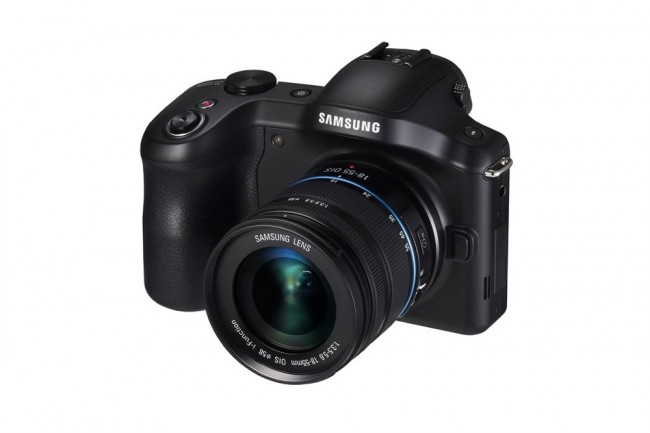
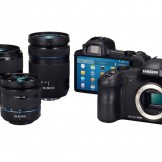
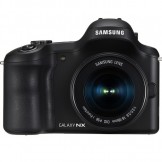
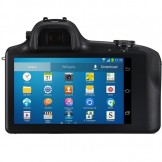
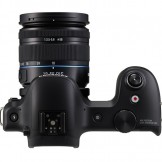
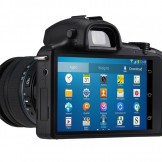
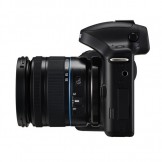
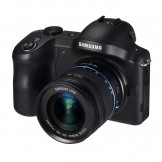
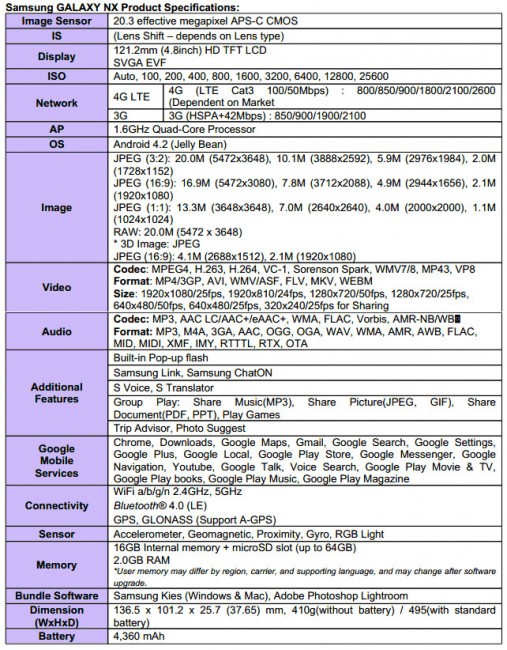


No comments:
Post a Comment